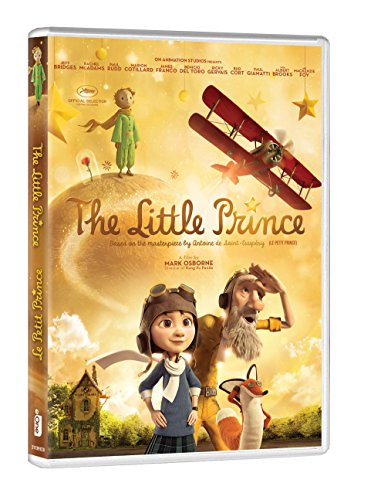All Nonfiction
- Bullying
- Books
- Academic
- Author Interviews
- Celebrity interviews
- College Articles
- College Essays
- Educator of the Year
- Heroes
- Interviews
- Memoir
- Personal Experience
- Sports
- Travel & Culture
All Opinions
- Bullying
- Current Events / Politics
- Discrimination
- Drugs / Alcohol / Smoking
- Entertainment / Celebrities
- Environment
- Love / Relationships
- Movies / Music / TV
- Pop Culture / Trends
- School / College
- Social Issues / Civics
- Spirituality / Religion
- Sports / Hobbies
All Hot Topics
- Bullying
- Community Service
- Environment
- Health
- Letters to the Editor
- Pride & Prejudice
- What Matters
- Back
Summer Guide
- Program Links
- Program Reviews
- Back
College Guide
- College Links
- College Reviews
- College Essays
- College Articles
- Back
The Little Prince
Stuck in bed with a cold, The Little Prince left me with enough strength to sit up and write this review. The film, based on a French children’s book from the 1940s, is incredibly imaginative in its imagery and plot. It employs both stop-motion and computer animations — clay figures to imitate the whimsical style of the original, and 3-D ones to build a world modeled after ours.
I watched the film because I thought I could use a cheering-up. And what better movie to make me feel pleasant and hopeful on sick day than one titled The Little Prince? The film stayed true to the watercolor illustrations of its namesake, and began with a playful montage of drawings coming to life. Having never seen the trailer, I expected the movie to stay in this wondrous world of its title. Surprisingly, it soon delved into a world we, as teenagers today, are all too familiar with: the modern one. A sleek and monochromatic cityscape, where everything is efficient and — as the film would call it — essential.
If I was younger, I would have been immediately turned off by this grey and white world, and recognized it as the opposite of what the film was trying to promote. But I am a junior in high school. The young protagonist and her mother are more motivated about her future than I have ever been about mine. Their house looked pristine. The pantsuits looked refined. Faced with a million things to do for sports, college applications, and school in general, their lives actually appealed to me. Every hour, every minute, was mapped out, and that level of organization is something I strive for everyday. So I became discouraged, as if I failed the film before it barely started.
But that is precisely the point of The Little Prince. When the film began, it had two polar opposites of characters. The Aviator, the eccentric narrator of the Little Prince’s adventures, captured the wisdom of the origin materials. The Little Girl, who reluctantly befriends the Aviator, was the symbol in which we can easily see ourselves. As the film progressed, it did something the book may never quite accomplish: it updated the story for the world we live in today. The girl didn't get the story of Little Prince. Not the first time, anyway. She questioned it: its logic, its purpose, its ending… When her interactions with the Aviator led her to realize what the story is trying to say, and so do those of us watching her.
It is okay that when we grow up, we become more goal-oriented, more round-edged. It is okay that we dress in black because it is slimming and white because it looks sophisticated. What’s more important, though, is that we remember what colors can do. What emotions can do. As long as we inject a little bit of heart, and — dare I be so cliche — love into our actions, even if we work in accounting, we are going to be just fine. Films like The Little Prince took an age-old story and reminded us to remember, to have the courage to create something as beautiful and fantastical as the film itself. Once in a while, we need to watch films like this. So that we don’t forget. Because if we do, it would be a
Catastrophe.
Similar Articles
JOIN THE DISCUSSION
This article has 0 comments.

